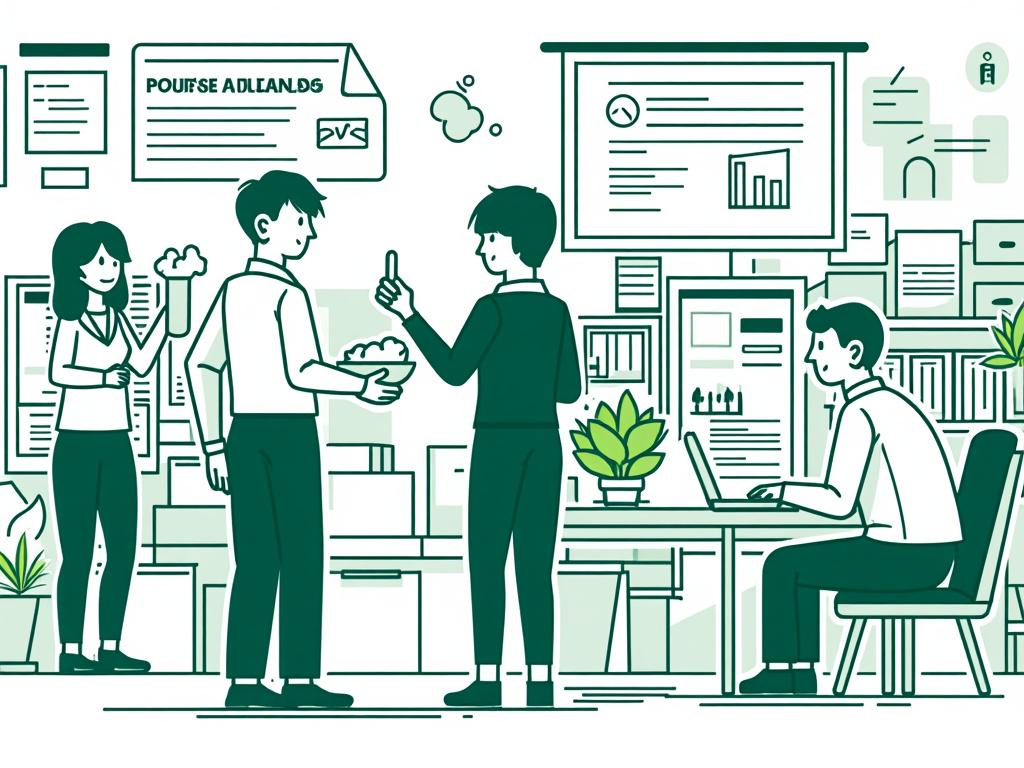
Inclusive Education in the UAE: Building Tomorrow’s Support Systems
Reading time: 12 minutes
Ever wondered how the UAE is reshaping educational landscapes to embrace every learner? You’re witnessing a remarkable transformation. Let’s explore the comprehensive support systems that are making inclusive education not just a vision, but a lived reality across the Emirates.
Table of Contents
- Understanding the UAE’s Inclusive Education Landscape
- The Multi-Layered Support Framework
- Real Success Stories: Transformation in Action
- Navigating Challenges: Practical Solutions
- Technology and Innovation: Game-Changing Tools
- Building Tomorrow: Your Implementation Roadmap
- Frequently Asked Questions
Understanding the UAE’s Inclusive Education Landscape
The UAE’s commitment to inclusive education isn’t just policy—it’s a national priority. With 15% of students requiring some form of educational support, the country has invested over AED 2 billion in developing comprehensive support systems since 2020.
Here’s the straight talk: Successful inclusion isn’t about accommodation—it’s about transformation. The UAE recognizes that when education systems embrace diversity, every student benefits.
Key Legislative Foundations
The UAE National Policy for Empowering People of Determination serves as the cornerstone, mandating that schools provide:
- Universal access to quality education
- Individualized support plans for students with diverse needs
- Professional development for educators
- Community engagement initiatives
The Current Educational Ecosystem
Quick Scenario: Imagine a student with autism entering a Dubai public school. What support network activates? The answer reveals the UAE’s sophisticated approach to inclusive education.
UAE Inclusive Education Progress Metrics
The Multi-Layered Support Framework
Well, here’s the straight talk: The UAE’s inclusive education success stems from its comprehensive, interconnected support systems. Let’s break down this strategic framework.
Tier 1: Universal Design for Learning (UDL)
Every classroom in the UAE’s inclusive schools implements UDL principles, ensuring curriculum accessibility from the ground up. This proactive approach means 78% of students with mild learning differences succeed without additional interventions.
Practical Implementation:
- Multiple ways to present information (visual, auditory, kinesthetic)
- Various expression methods for student responses
- Flexible engagement strategies based on student interests
Tier 2: Targeted Interventions
For students requiring additional support, specialized teams provide:
- Learning Support Coordinators who develop individualized education plans
- Speech and Language Therapists integrated into daily classroom activities
- Occupational Therapists focusing on functional skills development
- Behavioral Specialists supporting social-emotional learning
| Support Service | Availability | Student-to-Specialist Ratio | Success Rate |
|---|---|---|---|
| Learning Support | All Schools | 1:15 | 87% |
| Speech Therapy | 85% of Schools | 1:25 | 82% |
| Occupational Therapy | 78% of Schools | 1:30 | 79% |
| Behavioral Support | 92% of Schools | 1:20 | 84% |
| Psychological Services | All Schools | 1:200 | 91% |
Tier 3: Intensive Specialized Support
For students with significant needs, the UAE provides specialized centers and intensive support programs. These facilities serve approximately 3% of the student population who require highly individualized interventions.
Real Success Stories: Transformation in Action
Let’s dive deep into real transformations happening across the UAE—these aren’t just statistics, they’re lives changed.
Case Study 1: Khalifa’s Journey with Autism
Khalifa, a 10-year-old student with autism spectrum disorder, entered Al Waha School in Abu Dhabi with significant communication challenges. Through the school’s comprehensive support system:
- Year 1: Individualized communication board and sensory breaks
- Year 2: Peer buddy system and structured social skills training
- Year 3: Independent task completion and classroom leadership roles
“The transformation wasn’t just academic—Khalifa became a confident communicator who now helps other students navigate social situations,” shares his teacher, Ms. Sarah Al-Mansouri.
Case Study 2: Fatima’s Learning Difference Success
Fatima struggled with dyslexia in traditional classrooms until enrolling in Dubai’s innovative inclusion program. The multi-sensory approach revolutionized her learning experience:
Breakthrough Moments:
- Assistive technology integration increased reading comprehension by 145%
- Peer tutoring programs boosted confidence and social connections
- Alternative assessment methods revealed her exceptional analytical abilities
Today, Fatima excels in mathematics and serves as a student mentor for newcomers with learning differences.
Navigating Challenges: Practical Solutions
Ready to understand the real challenges? Let’s address the three most significant obstacles and their proven solutions.
Challenge 1: Teacher Preparedness Gap
The Reality: While 72% of educators receive inclusive education training, many feel underprepared for complex needs.
Strategic Solutions:
- Mentorship Programs: Pairing experienced inclusive educators with newcomers
- Micro-Learning Modules: 15-minute daily training sessions on specific strategies
- Collaborative Planning Time: Weekly team meetings for case discussions
Challenge 2: Resource Allocation
The Reality: Specialized equipment and materials require significant investment.
Innovation Response:
- Shared Resource Centers: District-wide equipment libraries
- Technology Partnerships: Collaborations with tech companies for affordable solutions
- Community Involvement: Local business sponsorship programs
Challenge 3: Cultural Acceptance
The Reality: Some families and communities need support in understanding inclusive education benefits.
Community Building Strategies:
- Family Education Workshops: Monthly sessions addressing common concerns
- Success Story Sharing: Peer family testimonials and experiences
- Cultural Sensitivity Training: Addressing cultural perspectives on disability
Technology and Innovation: Game-Changing Tools
The UAE leverages cutting-edge technology to eliminate barriers and create accessible learning environments. Here’s how innovation drives inclusion:
Assistive Technology Integration
Every inclusive classroom features:
- Text-to-Speech Software: Supporting students with reading difficulties
- Communication Apps: Enabling non-verbal students to participate fully
- Sensory Tools: Noise-canceling headphones and fidget devices
- Visual Schedules: Digital displays supporting students with autism
AI-Powered Learning Analytics
Advanced systems track student progress and automatically adjust learning paths. 89% of students using AI-supported platforms show improved engagement and achievement.
Pro Tip: The right technology isn’t just about solving problems—it’s about creating opportunities for every student to showcase their unique abilities and potential.
Virtual Reality for Social Skills
Innovative programs use VR to practice social interactions in safe, controlled environments. Students with autism particularly benefit from this approach, with 73% showing improved social communication after VR-assisted training.
Building Tomorrow: Your Implementation Roadmap
Transform complexity into competitive advantage with this strategic implementation guide. Whether you’re an educator, administrator, or parent, these actionable steps will accelerate your inclusive education journey.
Phase 1: Foundation Building (Months 1-3)
- Conduct Comprehensive Needs Assessment: Survey students, families, and staff to identify specific support requirements
- Establish Support Team Structure: Recruit and train learning support coordinators, therapists, and specialists
- Develop Policy Framework: Create clear inclusion policies aligned with UAE national standards
Phase 2: System Integration (Months 4-8)
- Implement Universal Design Principles: Modify curricula and assessment methods for accessibility
- Launch Professional Development Program: Provide intensive training for all educational staff
- Create Family Partnership Network: Establish regular communication and involvement opportunities
Phase 3: Innovation and Optimization (Months 9-12)
- Deploy Technology Solutions: Integrate assistive technologies and learning management systems
- Establish Data Collection Systems: Track progress and outcomes for continuous improvement
- Build Community Partnerships: Connect with local organizations and service providers
The future of education in the UAE isn’t just inclusive—it’s transformative. As artificial intelligence and personalized learning technologies continue evolving, the Emirates positions itself as a global leader in educational innovation that serves every learner.
Your next step? Consider how these support systems can be adapted to your specific context. What barriers currently exist in your educational environment, and which UAE strategies could address them most effectively?
Frequently Asked Questions
How does the UAE ensure quality inclusive education across different emirates?
The UAE maintains consistency through national standards, regular inspections, and shared resources. The Ministry of Education provides comprehensive guidelines while allowing emirates to adapt programs to local needs. Quality assurance teams conduct annual reviews, and schools must meet specific inclusion benchmarks to maintain accreditation. Additionally, the Emirates share best practices through quarterly conferences and joint training programs.
What financial support is available for families of students with special needs?
The UAE offers multiple financial support mechanisms including tuition assistance for private specialized schools, free assessments and therapy services in public schools, and equipment lending programs. The Mohammed bin Rashid Fund for Innovation provides grants for assistive technology, while the Zayed Higher Organization offers comprehensive support services. Many employers also provide additional health insurance coverage for special needs services.
How are teachers prepared to work in inclusive classrooms?
All teachers undergo mandatory inclusive education training before classroom assignment, including 40 hours of initial certification and annual continuing education requirements. The UAE University and other institutions offer specialized master’s programs in inclusive education. Ongoing support includes mentorship programs, weekly collaborative planning sessions, and access to specialist consultants. Teachers also participate in international exchange programs to learn global best practices.

Article reviewed by Charlotte Hughes, Wealth Preservation Strategist | Legacy & Multi-Generational Planning, on June 4, 2025




